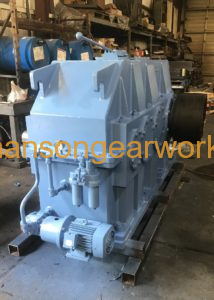Embarking on the intricate journey of precision gear manufacturing, this guide unveils the art and science of precision rebuilding techniques. From meticulous gear analysis to advanced manufacturing methodologies, we delve into the core principles that elevate gear performance.
With a focus on precision gear manufacturing techniques, discover how the fusion of cutting-edge technology and time-honored craftsmanship shapes the landscape of gear rebuilding, ensuring optimal functionality and longevity.
Join us as we unravel the nuances of mastering gear manufacturing, where precision is not just a standard but an unwavering commitment to excellence in every cog and tooth.
Precision Gear Manufacturing Techniques: Engineering Excellence
Precision rebuilding techniques stand as the cornerstone in elevating the quality and functionality of gears in manufacturing processes. These methodologies, meticulously crafted and executed, ensure the utmost precision, durability, and operational efficiency.
1. In-Depth Gear Analysis
Before rebuilding commences, a comprehensive analysis of gears is conducted. This involves assessing wear patterns, tooth profiles, and material integrity. Modern technologies, such as laser scanning and 3D modeling, enhance the accuracy of this diagnostic phase.
2. Material Selection and Enhancement
Precision rebuilding involves selecting materials that meet or exceed original specifications. Advanced alloys and heat treatment processes enhance the strength and wear resistance of gears, contributing to prolonged operational life.
3. Tooth Profile Restoration
Restoring the precise tooth profiles is crucial for optimal gear engagement. Precision machining techniques, including CNC grinding and hobbing, ensure that each tooth aligns seamlessly with its counterpart, promoting smooth operation and reducing wear.
4. Surface Treatment for Wear Resistance
Applying specialized coatings or treatments to gear surfaces enhances wear resistance. Processes like nitriding or carburizing create hardened surface layers, safeguarding against abrasion and extending the longevity of the gears.
5. Tolerance Control and Inspection
Throughout the rebuilding process, strict adherence to tight tolerances is maintained. Advanced metrology tools and techniques guarantee dimensional accuracy. Rigorous inspection protocols, including non-destructive testing, validate the integrity of the rebuilt gears.
6. Dynamic Balancing
Dynamic balancing is employed to eliminate any imbalances that could lead to vibrations during operation. This is crucial for gears used in high-speed applications, promoting stability and reducing stress on components.
7. Lubrication Optimization
Precision rebuilding includes optimizing lubrication systems. Proper lubrication is vital for reducing friction and heat, ensuring smooth gear operation. Enhanced lubrication extends the life of gears and minimizes wear.
8. Performance Testing
Rebuilt gears undergo rigorous performance testing to validate their functionality under real-world conditions. This includes load testing, endurance testing, and efficiency assessments to guarantee top-notch performance and reliability.
By incorporating these precision rebuilding techniques into gear manufacturing processes, manufacturers ensure that the rebuilt gears not only meet but exceed the original specifications. This commitment to engineering excellence results in gears that deliver unmatched quality, functionality, and longevity, ultimately enhancing the overall efficiency of the machinery in which they operate.

Unlock peak performance with Hanson Gear Works! Expert in gear manufacturing, gearbox rebuilding, and gearbox repair. Elevate your machinery’s efficiency—contact us for top-notch solutions and unmatched engineering excellence today!
